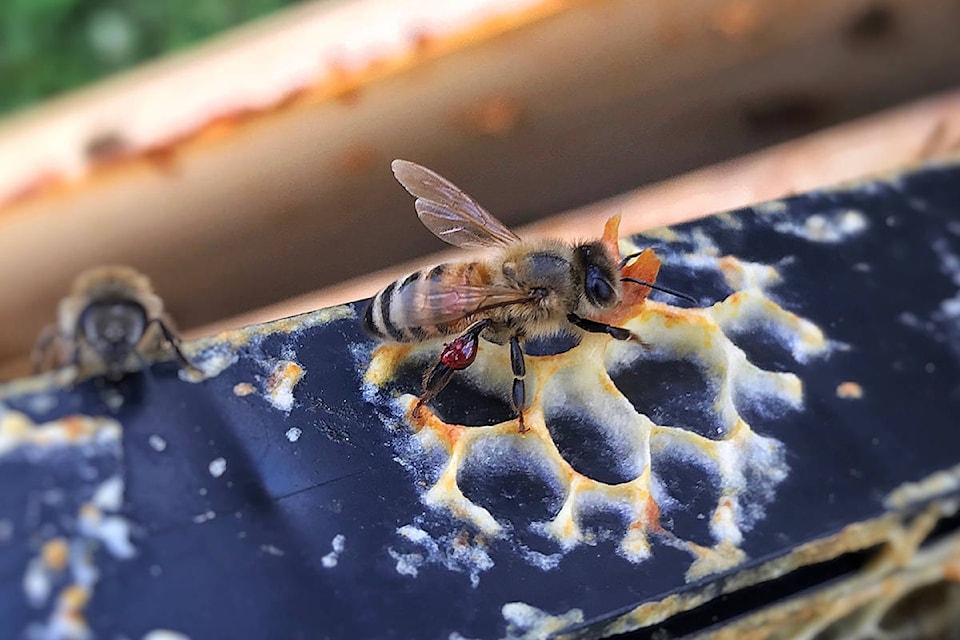We have come to know honeybees (Apis mellifera) for what their name suggests: ‘honey bearing’. But honey isn’t the only product these pollinators create; honeybees are exceptional propolis manufacturers.
As beekeepers, we are all too familiar with propolis or ‘bee glue’- that sticky product that makes lifting the lid off the hive sometimes seem impossible. But what is propolis and why do bees encase their home with it?
Propolis is the by-product of tree resin, which honeybees collect from tree sap or leaf buds. Tree resin is collected on foraging flights. It is sticky, typically red in colour and attaches to the pollen sacs on the hind legs of worker bees. Once the worker bee arrives back at the hive, a fellow honeybee helps offload the sticky product which is then combined with several hive components, such as beeswax, honey and essential oils.
Why allocate foraging time and energy to collect a product that doesn’t feed the colony? Not only does this resin by-product hold structural integrity and aids in warding off wood decay, but it also acts as a defence against pathogens. Propolis properties are antibacterial and antifungal, and by encasing the colony in propolis, it creates an incredible natural defence barrier. In cases of insect intruders, the colony will sometimes kill the intruder and encase the body in propolis, protecting the colony from any spoils that the rotten carcass may release in their environment. In addition, in wild colonies found in hollow trees, you can sometimes see wood decay up to the propolis border protecting the colony - thus keeping their home pathogen-free and structurally intact. Propolis is undoubtedly an incredible product.
We can stimulate propolis production in our own hives by scraping the inside of the wooden boxes during hive construction. Scraping the wood will create the uneven texture honeybees tend to fill with propolis. In addition, when we do break this barrier during hive inspections, I would suggest refraining from scraping off this sticky substance completely. As you may notice, it takes quite a bit of energy to collect and manufacture enough propolis to seal every crack and unwanted entrance. By leaving propolis on the inner cover of your hive or between brood boxes, the sticky substance will easily reseal itself after your hive inspection is complete.
Happy beekeeping!
Rachel Halliwell is a Bee Master Certified beekeeper in the Comox Valley. Her website is www.homegrownbee.ca
